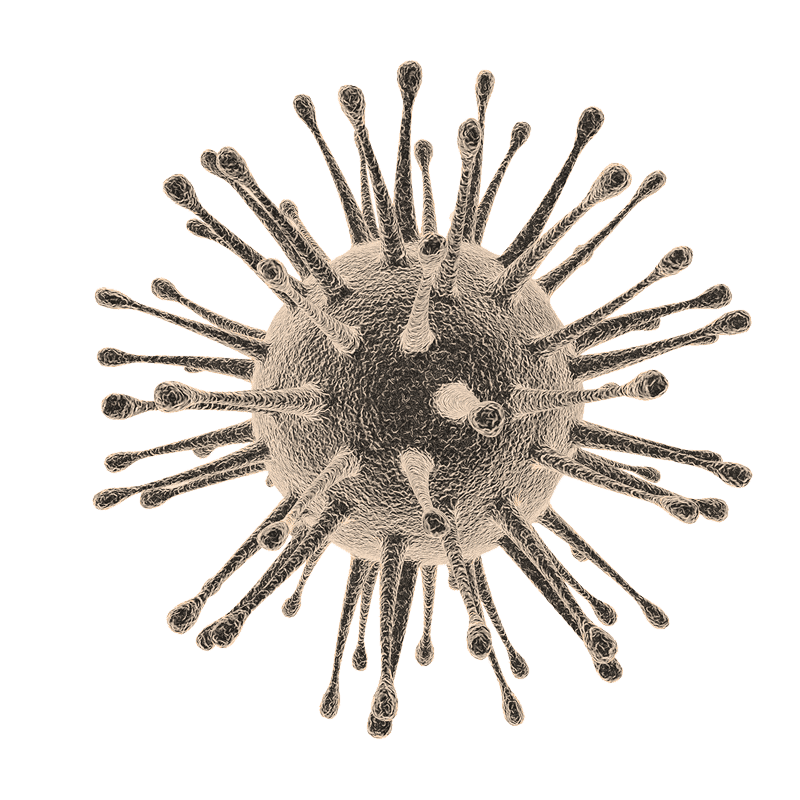ENA Respiratory announces research on preventative nasal spray, which protects against COVID-19 and common cold, published in leading peer-reviewed academic journals
Research on preventative nasal spray, which protects against COVID-19 and common cold, published in leading peer-reviewed academic journals
- Research on preventative COVID-19 nasal spray published in prestigious, peer-reviewed academic journals: EBioMedicine and the European Respiratory Journal
- Novel therapy developed by Australian biotech company, Ena Respiratory, shown in animal study to reduce COVID-19 virus levels in the nose and throat by up to 96%; also found to be effective against rhinovirus (common cold), the predominant cause of the common cold and exacerbations of chronic respiratory diseases including asthma and COPD
- Mode of action complementary to COVID-19 vaccines, once weekly nasal spray to play significant role in reducing COVID-19 community transmission and disease progression in at risk populations
- Ena Respiratory to progress to human clinical trials in Australia in Q1 2021
Melbourne, Australia – 18 December 2021: Research on a novel nasal spray therapy, INNA-051, which has been shown to reduce COVID-19 viral replication by up to 96 percent in a gold standard ferret study, has been published in two leading international peer-reviewed journals.
INNA-051 is being developed by Ena Respiratory, an Australian biotech company. The results of an animal study showing the therapy’s effectiveness against COVID-19 virus, carried out by Public Health England (PHE), has been published in EBioMedicine[1], a prestigious peer-reviewed, open-access, academic journal published by The Lancet. Another study, examining rhinovirus infection in human airway cells and animal models has been published in the European Respiratory Journal[2]. This later study provides significant insight into the treatment’s mechanism of action and efficacy in cells from people with asthma.
“We’re thrilled to have two such highly-regarded, peer-reviewed journals publish research papers demonstrating the broad-spectrum efficacy of our drug against multiple respiratory viruses, including the COVID-19 and rhinovirus,” says Ena Respiratory Managing Director, Dr Christophe Demaison. “This is an important milestone as we are on track to initiate safety human trials in Australia by end of March 2021, and onwards to making our treatment available to the public.”
As the distribution of COVID-19 vaccines is rolled out across the globe, Ena Respiratory’s preventative nasal treatment may be used in conjunction with approved vaccines to limit community transmission of the virus and further reduce the risk of disease progression in at risk population, including elderly.
“It’s been a remarkable accomplishment of the medical community across the globe to see many vaccines progressed so rapidly but there are still a lot of unknowns about how effective they will be in at-risk populations such as the elderly and those with comorbidities,” says Dr Demaison. “The emergence of new virus strains remains an ongoing concern. By boosting the natural immune system, we see INNA-051 having a powerful role to play that is complementary to vaccines.”
The INNA-051 compound works by stimulating the innate immune system, the first line of defence against the invasion of pathogens into the body. By boosting the immune response at the primary site of infection, the ability of the COVID-19 virus to infect the animals and replicate was dramatically reduced the PHE study showed. The study provides evidence that INNA-051 can be used as a stand-alone method of antiviral preventative therapy, complementary to vaccine programs.
“Our hope is that INNA-051 will ensure individuals exposed to the virus are less likely to spread it, as well as prompting an immune response which will limit the virus’s ability to progress beyond mild symptoms,” says Dr Demaison. “The natural immune response that INNA-051 produces works exceptionally well in minimising the viral replication of COVID-19, and subsequently the risk of community transmission, meaning this is an ideal supplement to vaccines.”
Viral Immunologist at Hunter Medical Research Institute (HMRI), Associate Professor Nathan Bartlett, has been working to show the efficacy of closely related INNA compounds. His research has shown that INNA-X is efficacious against rhinovirus (common cold) when administered once weekly. It works by activating the epithelial cells that form the surface of the airways to stimulate a rapid immune response that efficiently controls infection. The treatment is effective in human epithelial cells derived from asthma, which are known to have delayed innate anti-viral immune responses.
“The demonstration that INNA compounds can work against different respiratory viruses, and can boost the innate immune response in cells derived from patients with lung conditions associated with delayed anti-viral immunity such as asthma, is particularly encouraging,” says Associate Professor Bartlett. “This means patients will be able to respond more quickly to contain a virus infection before it can spread to the lungs and cause more severe disease such as an asthma attack.”
In October, Ena Respiratory raised AU$11.7m from Australian investors and the company is now in discussions with existing and new investors to further accelerate the nasal spray’s clinical development and global distribution.
The Australian capital raise was led by the Brandon Capital managed, Medical Research Commercialisation Fund (MRCF) and a coalition of investment partners. These include the Australian Government through the MRCF Biomedical Translation Fund, four leading superannuation funds – AustralianSuper, HESTA, Hostplus, Statewide Super – and biotech giant, CSL. University commercialisation fund, Uniseed also participated.
INNA-051 is a synthetic small molecule and would be self-administered via an easy-to-use nasal spray, taken once or twice a week, with the treatment taking almost immediate effect. If human trials are successful and, given the unprecedented need for drugs to combat COVID-19, this prophylactic immune modulation therapy could be rapidly manufactured at scale and be available for use within 18 months.
[1] Proud et al. Prophylactic intranasal administration of a TLR2/6 agonist reduces upper respiratory tract viral shedding in a SARS-CoV-2 challenge ferret model. 2021: https://www.thelancet.com/journals/ebiom/article/PIIS2352-3964(20)30529-6/fulltext
[2] Girkin J, Loo S-L, Esneau C, et al. TLR2-mediated innate immune priming boosts lung anti-viral immunity. Eur Respir J 2020: https://erj.ersjournals.com/content/early/2020/11/26/13993003.01584-2020


